Sacramento’s Old City Cemetery has graves dating back to the Gold Rush. Who’s buried there?
- Oops!Something went wrong.Please try again later.
Uniquely is a Sacramento Bee series that covers the moments, landmarks and personalities that define what makes living in the Sacramento area so special.
Headstones and monuments dot more than 30 acres of land at Sacramento’s Historic City Cemetery.
Established in 1849, the cemetery — also known as the Old City Cemetery — is the final resting place of thousands of people, with some graves dating back to the Gold Rush era.
It’s served as a home to pioneers, military veterans, immigrants and other individuals whose roots lie deep in California’s past.
A reader asked Bee Curious, The Sacramento Bee’s community-driven series: “Who are some of the notables in the Sacramento cemetery?“
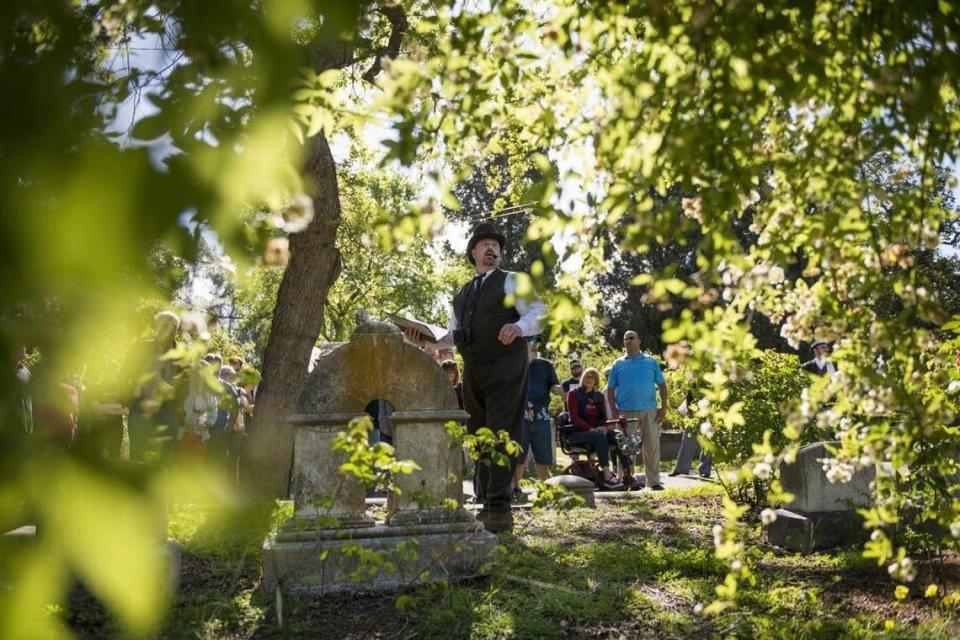
What is Sacramento Historic City Cemetery?
The cemetery at 1000 Broadway in Sacramento presents a Victorian garden, a style that was popular at the time of its inception, according to the Old City Cemetery Committee, a nonprofit organization dedicated to the cemetery’s preservation and restoration.
Among the intricate landscaping, rose garden and statues are more than 25,000 grave sites.
Some of the first people interred at the city cemetery, according to the committee, were victims of the cholera epidemic in 1850. More than 600 cholera patients are buried there.
A log from the city cemetery records the names of the deceased, as well as their ages, burial dates and respective grave sites. In some cases, the cause of death is noted, too.
This includes 5-month-old Garrett S. Abbink who died in 1900 due to capillary bronchitis and 25-year-old John P. Wallace, who died from typhoid fever in 1851.
One of the oldest people buried there is 100-year-old Winifred Electra Humphrey Landsborough, who died in 1986.
Many early settlers from across the globe are buried at the city cemetery, the committee said, symbolizing Sacramento’s historical and cultural diversity.
Those laid to rest there came from as far away as Switzerland, Germany, India, Japan and China.

Who are some notable people buried at the cemetery?
Those buried at Sacramento Historic City Cemetery include many notable and interesting people.
According to online cemetery resources and Jean Robins, a volunteer and tour guide with the Sacramento Historic City Cemetery since 2011, they include the following:
John Augustus Sutter Jr. (1826-1897)
The name “Sutter” should be familiar to many Sacramento residents.
John A. Sutter Jr. is the oldest son of Johann August Sutter, known for building Sutter’s Fort.
It served as a “popular emigrant destination” in the late 1800s, where settlers found shelter and supplies, according to the Sutter’s Fort State Historic Park.
Born in Switzerland, the younger John Sutter made his name by planning and founding the city of Sacramento in 1848, the cemetery stated in a brochure.
Sutter Jr. lived in Sacramento for a short period before moving to Mexico, where he was a commercial agent and consul for the U.S. State Department in Acapulco, according to the Online Archive of California.
He died in Mexico in 1897 and his remains were moved to the Historic City Cemetery in 1964.
Hardin Bigelow (1809-1850)
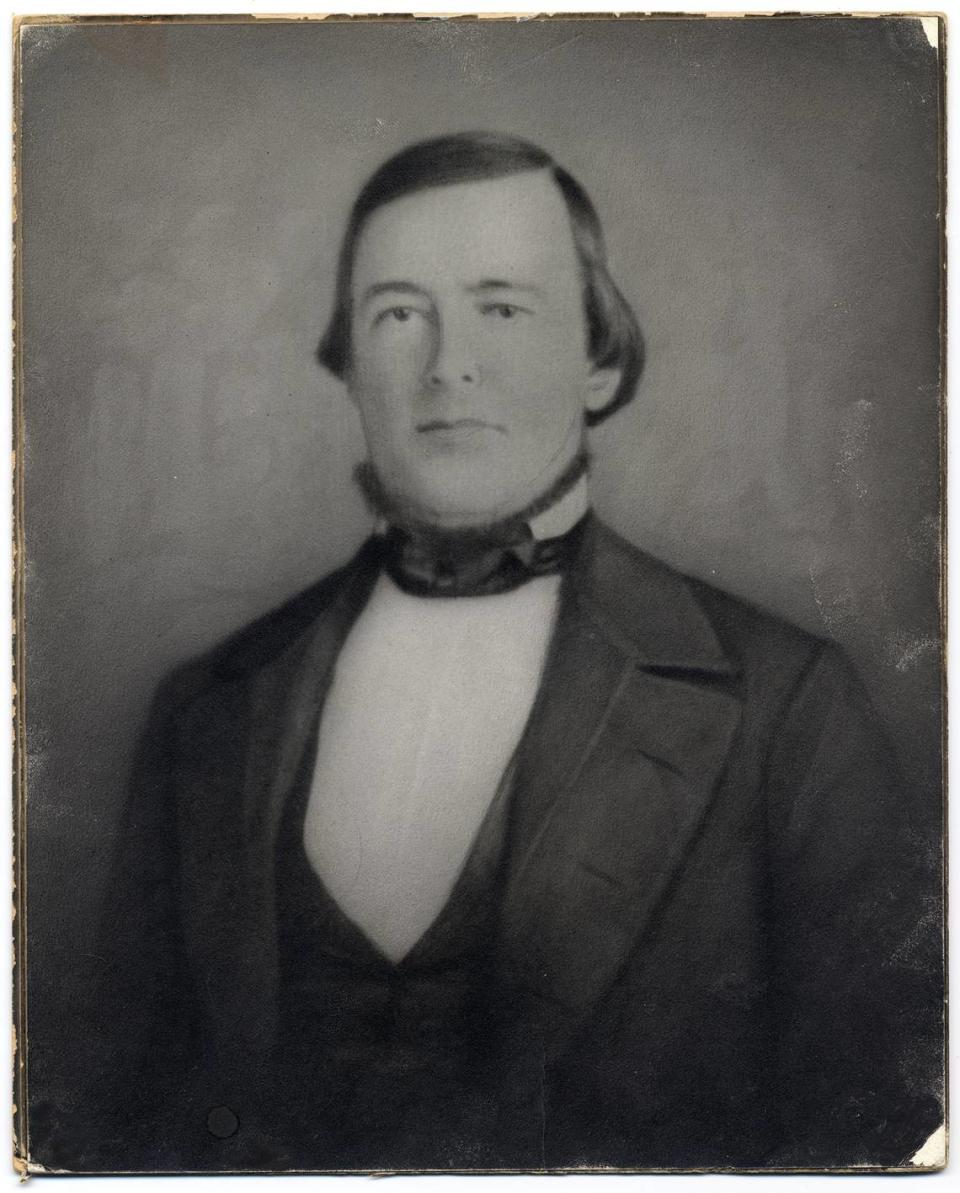
Hardin Bigelow, a Michigan native, was Sacramento’s first elected mayor in 1850.
According to the cemetery, Bigelow won the vote after funding the city’s first levee with his own money, following the major flood of January 1850.
His stint as mayor was cut short after the Squatters’ Riots in 1850.
The riots stemmed from Gold Rush settlers’ unhappiness with Sutter’s land titles, according to Sacramento History Online, a digital archive project by county institutions, including the Center for Sacramento History and the Sacramento Public Library.
The conflict led to a gunfight at the corner of 4th and J Streets in Sacramento.
Bigelow was severely wounded during the showdown. Although his injuries healed, according to the Sacramento History Museum, he later contracted cholera in San Francisco and died.
The Sacramento Transcript, a daily newspaper that ran from 1850 to 1851, published a memorial celebrating Bigelow’s accomplishments and contributions to the city following his death.
“We feel ourselves unable to depict in proper colors the weight of affliction under which our people are bowed, by the sudden death of the honored Chief Magistrate of Sacramento City,” said the memorial, published in November 1850. “He was, of all men, the one we were the least willing to spare.”
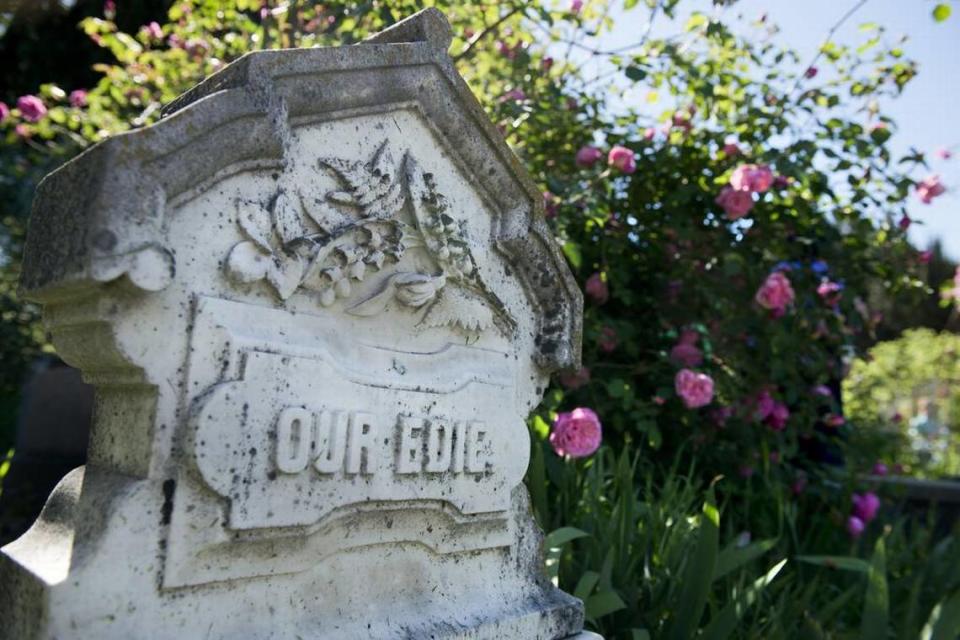
Georgia Fisher (died in 1875)
While Fisher was not a celebrity, her grave site is a cemetery focal point because it pays homage to the love she experienced during her life.
Fisher was due to marry Martin Bergman, a potter and sculptor, at Westminster Presbyterian Church in Sacramento on January 1, 1876, Robins said.
Just days before the wedding, the 19-year-old Fisher died of typhoid pneumonia.
To honor his lost love, Bergman worked with his father and brother to create a monument. It’s one of the most interesting ones in the cemetery, Robins said.
Bergman handcrafted brown square tiles, carving individual angels on some of them, Robins said. On one side of the monument, his father carved the angel Gabriel and his brother sculpted a highly decorated column.
The monument has suffered damages due to vandalism and wear and tear, Robins said. However, there is a plaque with a photograph of Fisher and a photo of the original memorial at her grave.
Edwin Crocker and family
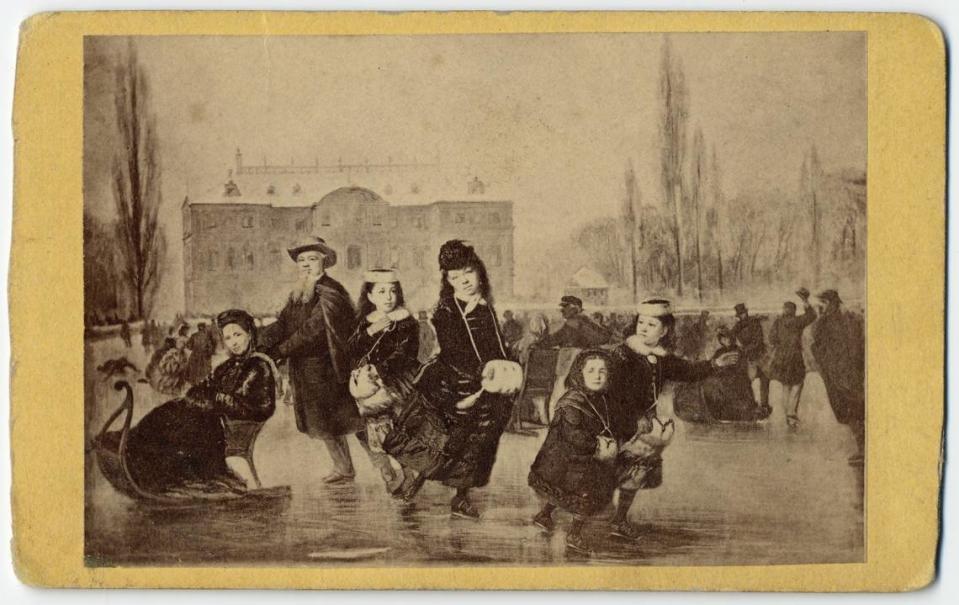
Several members of the Crocker family are residents of Sacramento Historic City Cemetery.
This includes Edwin B. Crocker (1818-1875) and his wife Margaret (1813-1891).
According to PBS, Edwin Crocker was an attorney for a company his younger brother Charles invested in — the Central Pacific Railroad.
Edwin Crocker became a part of the “Big Four” — a group of prominent merchants, which included his brother, Collis Huntington, Mark Hopkins and Leland Stanford. The four founded the Central Pacific Railroad, which was part of the first American transcontinental railroad.
Margaret Crocker was known for her charity work, the cemetery said in a brochure about significant women in the cemetery.
Known as “Lady Bountiful,” she opened a women’s retirement home and donated money to those in need.
She even gave her home as well as the contents of her private art gallery to the city of Sacramento.
“While on tour in Europe, (the Crockers) acquired a large art collection,” according to the cemetery. “Their collection along with their Victorian home, now the Crocker Art Museum, is the oldest art museum in the Western United States.”
Their daughter, Amy Isabel “Aimée” Crocker, is also buried at the cemetery. She was an heiress, traveler and author.
“She was born in 1864 and was anything but a typical Victorian lady,” Robins said.
Aimée was famous for rebelling against society’s expectations of women at the time — having parties and adventures. She was married five times.
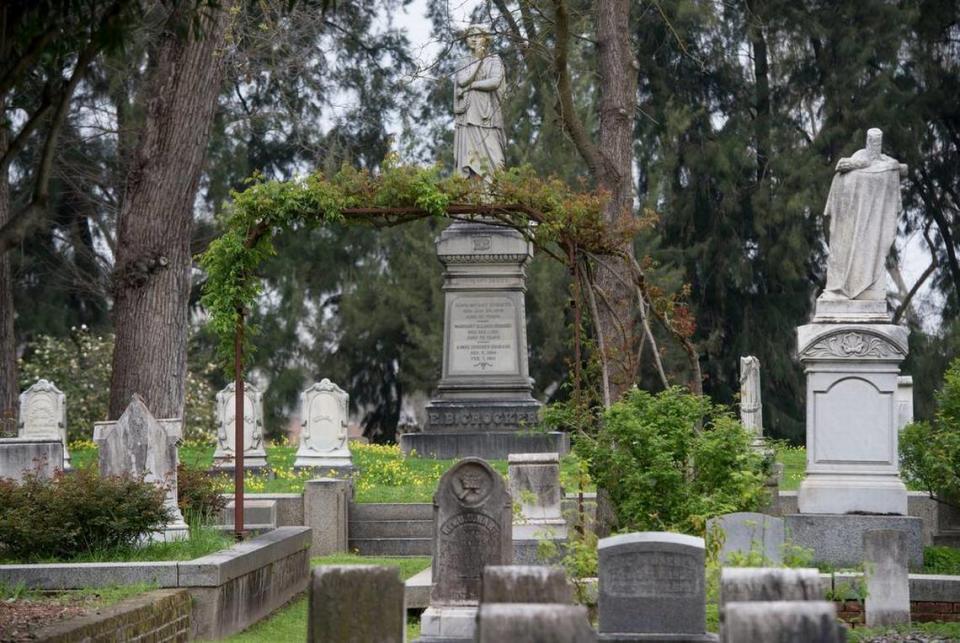
Caroline A. Williams (died 1887)
Hailing from Massachusetts, Williams was a successful Black businesswoman who owned hotels in the city, including the Clarendon Hotel in Old Sacramento.
According to the Sacramento History Museum, Williams came to California in 1850 and was known in the area as “Aunt Carrie.”
“Williams was an experienced caterer and had a ‘flattering reputation’ in Sacramento the previous four years where she had helped manage the Sacket Hotel and Grand Hotel,” the museum said.
The cemetery stated that Williams moved to San Francisco and operated another hotel, called the Sacramento House.
Adolph Heilbron (1833-1913)
Adolph Heilbron was one of the founding incorporators of the Buffalo Brewing Company, the largest brewery west of the Mississippi during its run in the late 1800s and early 1900s.
“Describing Adolf was not easy,” the cemetery brochure said, quoting from historical excerpts stating that he had “excellent business ability” and was “resourceful and energetic ... an active promoter of many enterprises.”
Heilbron was also one of the incorporators of the Capital Telephone & Telegraph Company, director of the California State Bank and a director of San Joaquin Ice and Creamery Company, which was “ ‘one of the largest institutions of the kind in the state.’ “
According to the cemetery, Heilbron was elected sheriff and tax collector of Sacramento County in 1879.
Mark Hopkins (1815-1878)
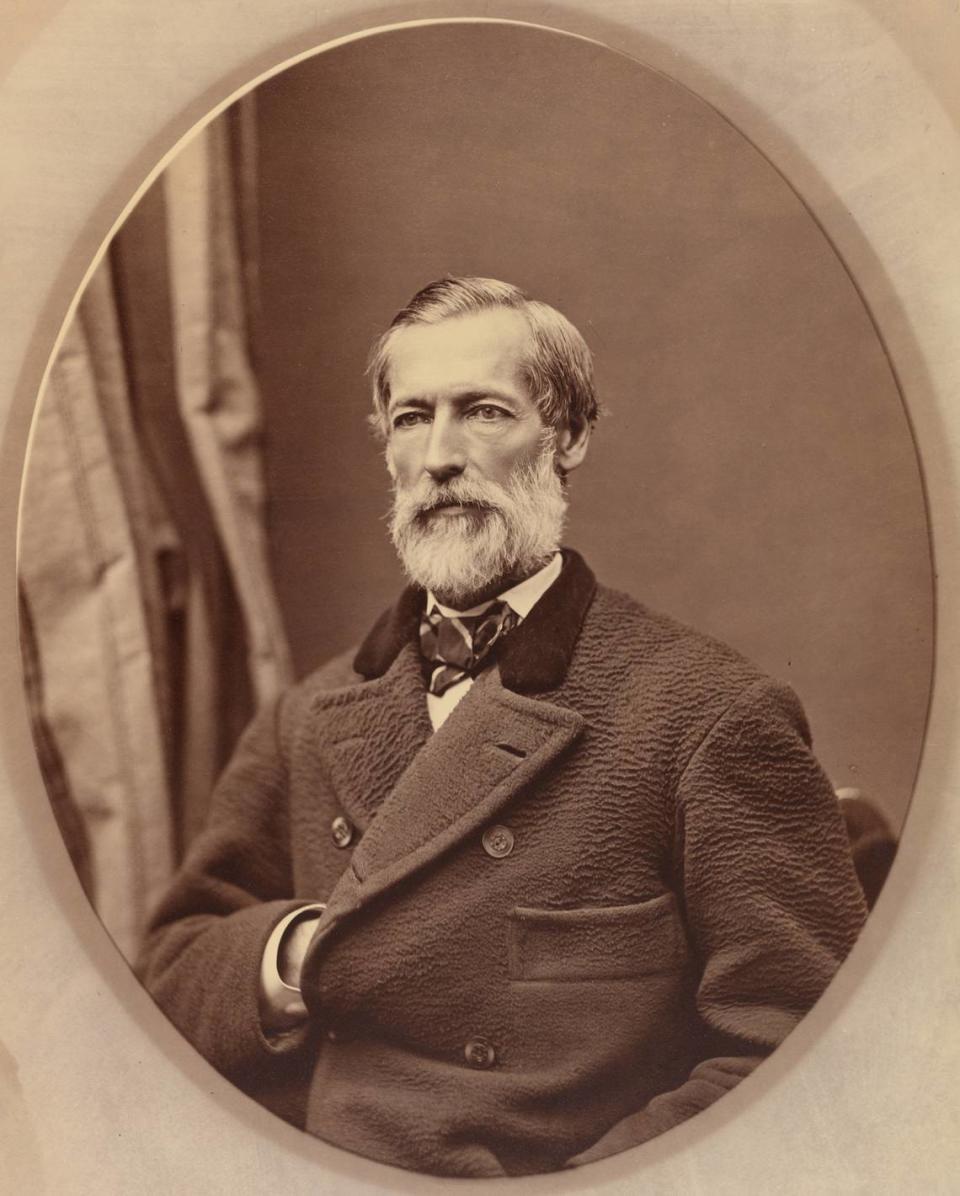
Mark Hopkins was one of the original investors of the Central Pacific Railroad, part of the transcontinental railroad.
Before venturing into railroads, Hopkins was a businessman and ran a grocery store in Placerville and Sacramento. He later started Huntington & Hopkins with another merchant, Collis P. Huntington, and it became one of the most profitable hardware stores in California.
Hopkins died in his sleep in Yuma, Arizona, according to his burial index, and was re-interred in the Sacramento cemetery in 1880.
“Known for being very conservative with his money, it is unlikely that he would have approved of the cost to create this 350-ton granite structure,” the cemetery said in a brochure.
In March 1878, The Sacramento Daily Union described the death of Hopkins — “one of Sacramento’s oldest and best friends” — as a “blow upon our city.”
William Stephen Hamilton (1797-1850)
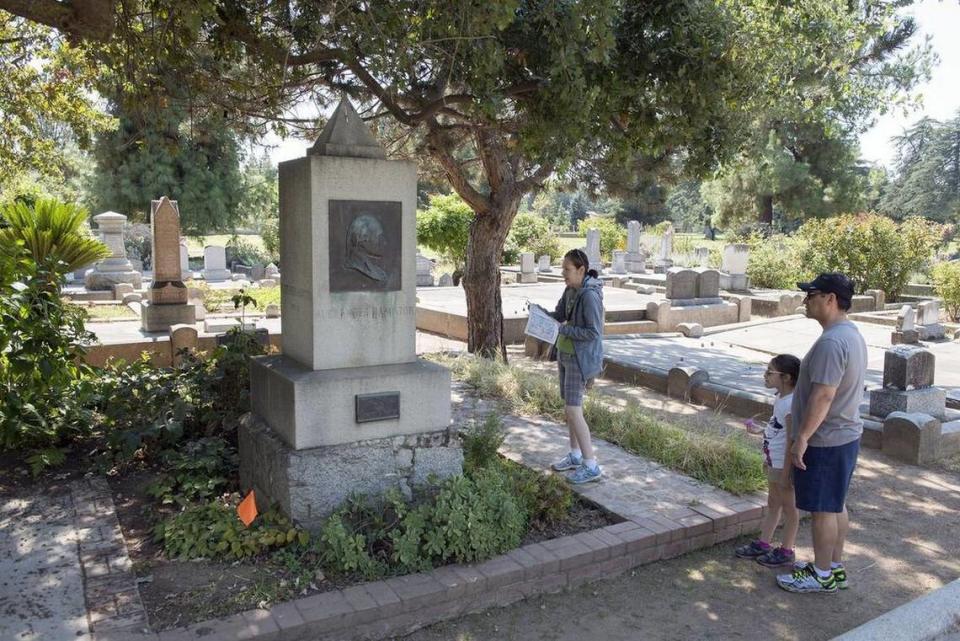
Alexander Hamilton’s youngest son was an early resident of the cemetery.
William Stephen Hamilton came to California in 1849 and died a year later in Sacramento, according to the cemetery, possibly due to the cholera epidemic.
Hamilton came from Illinois where he had a struggling mining business. Like many others at the time, he journeyed to California in search of gold, The Sacramento Bee reported.
According to the Wisconsin Historical Society, Hamilton was also a lawyer and politician and served in the volunteer Illinois Militia during the Black Hawk War of 1832.
“He is the cemetery’s most restless resident, having been exhumed twice (in 1877 and 1889) and buried three times in three different locations,” the cemetery said. “This is his final resting place.”
What to know about visiting a grave
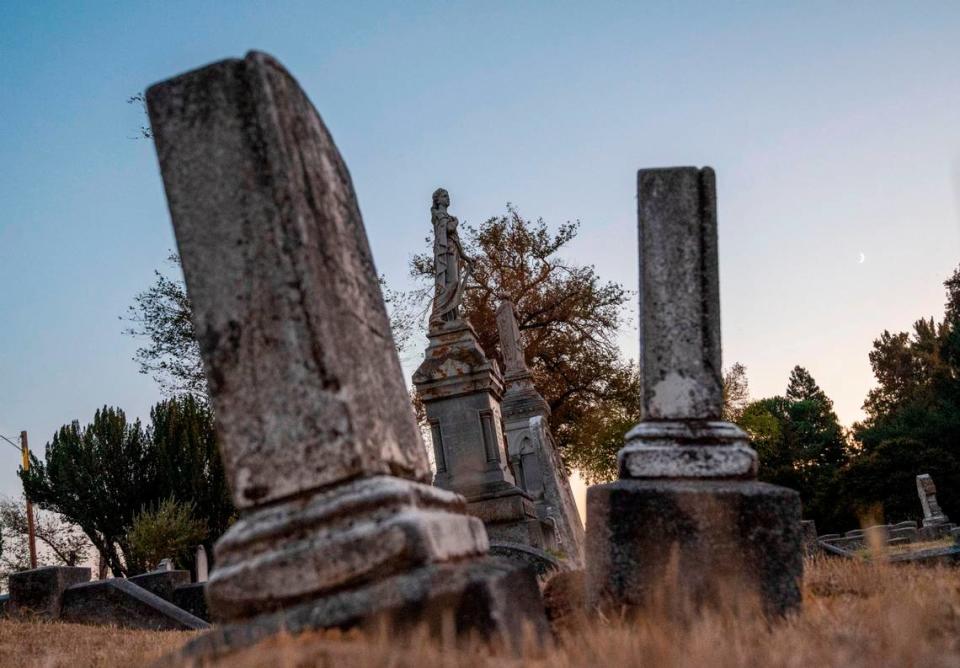
If you plan on visiting the cemetery, there are some things to consider.
Robins recommended that people not touch the headstones because body oils may affect the materials that they’re made of.
Additionally, you should stick to the path at the cemetery and be aware that not all graves are neatly marked. There may be people buried in spots that the cemetery may not know of, she said.
“I would try to remember that, someday, you’re going to end up somewhere like that, in whatever form you are — either in ashes or a full body burial,” Robins said. “Think about how you would like to be treated when it’s your turn.”

